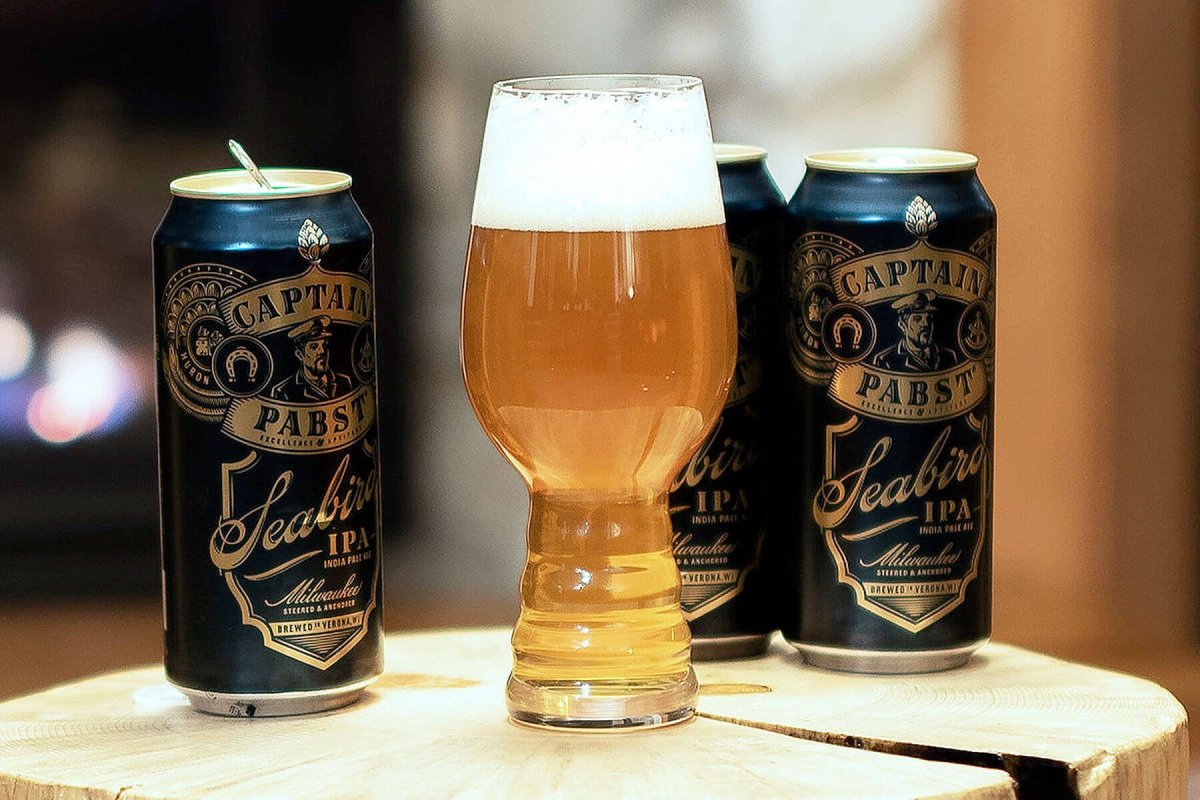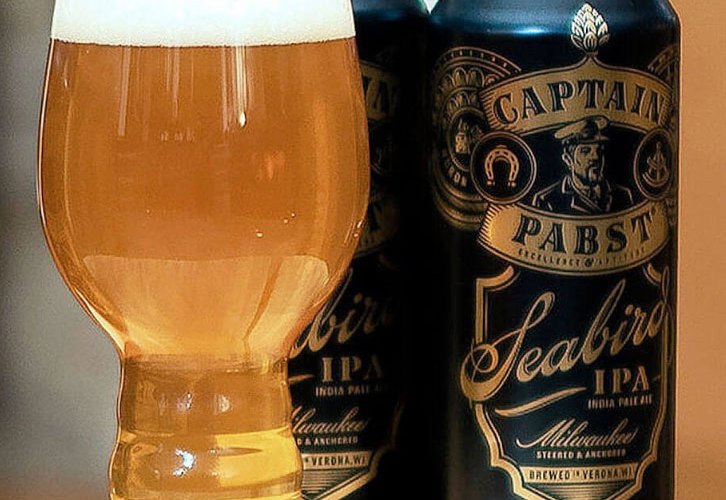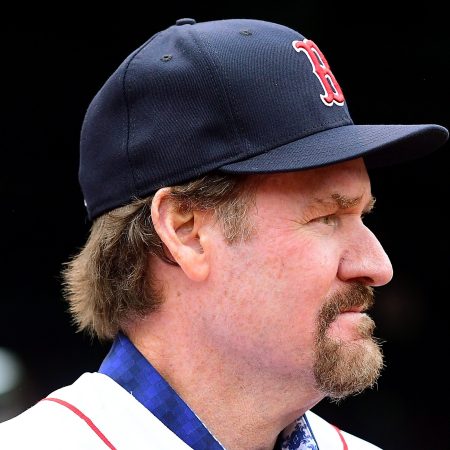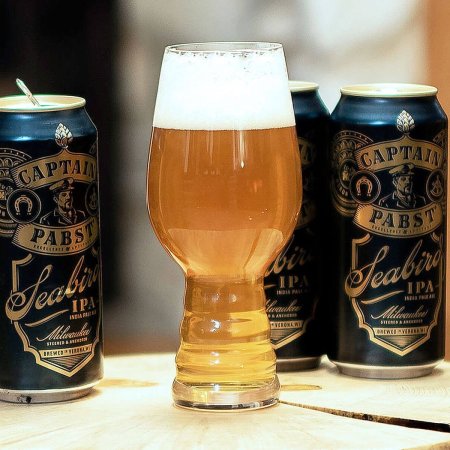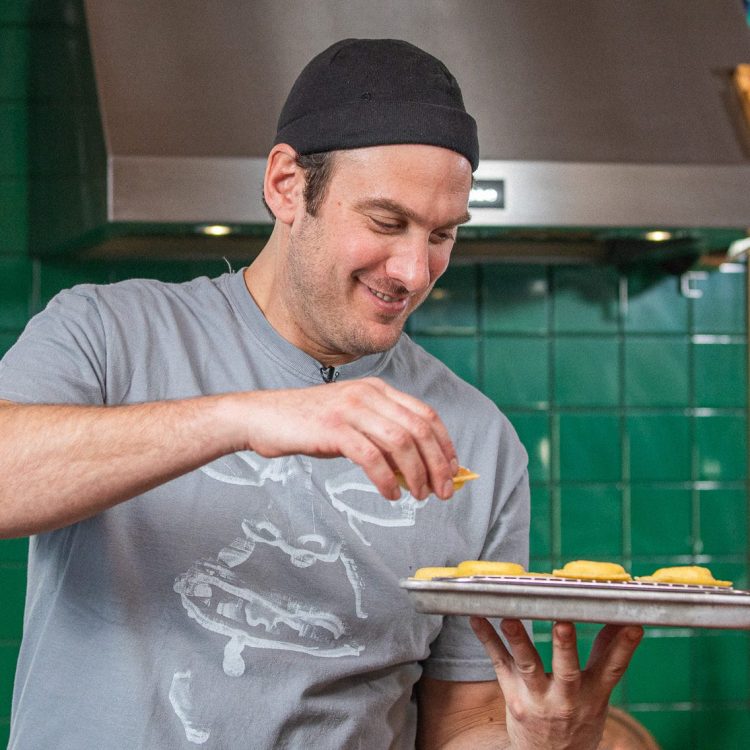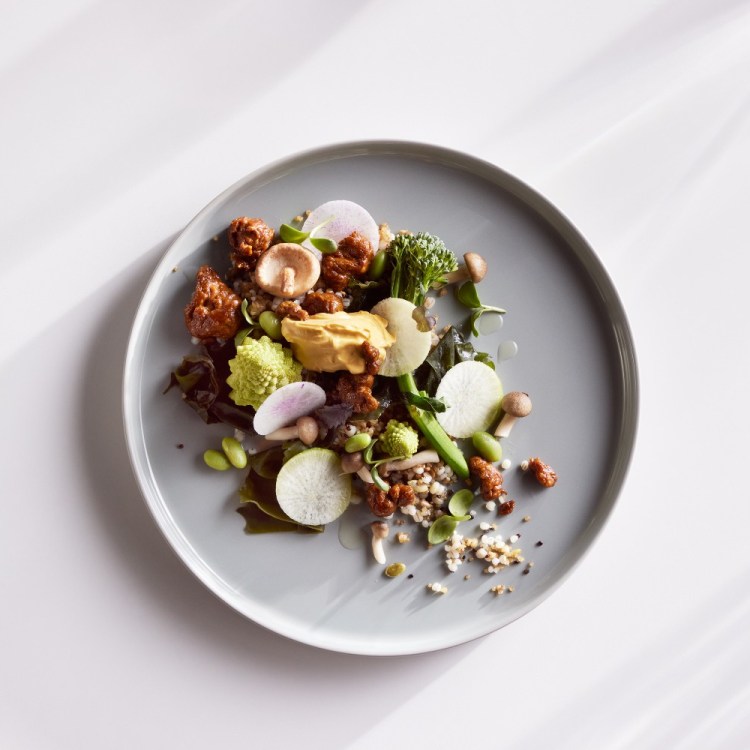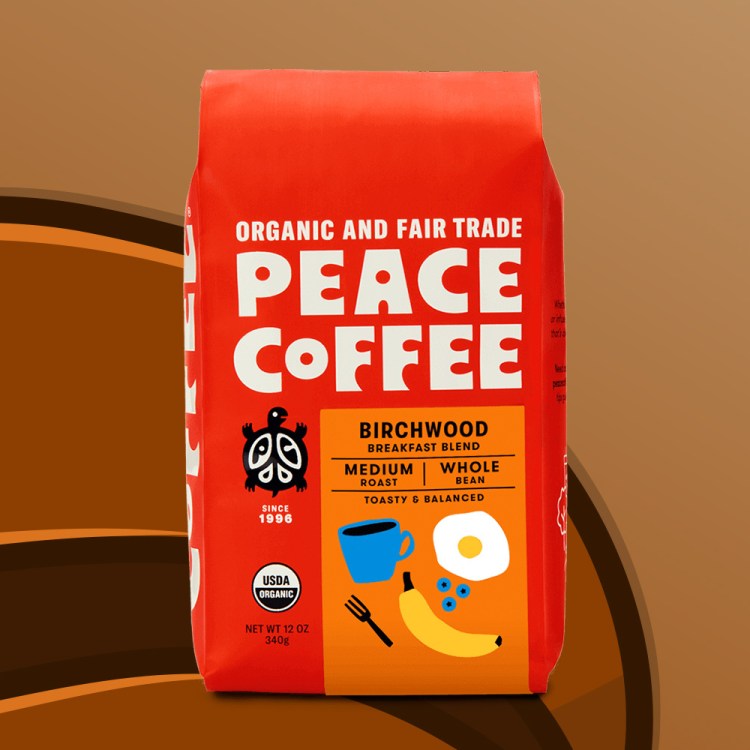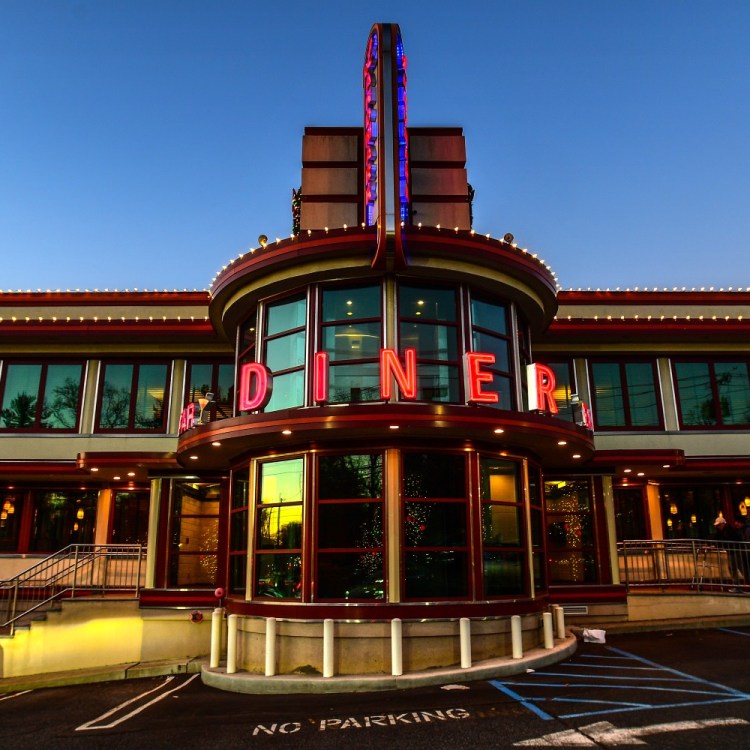Back in January, the Pabst Brewing Company announced the release of Captain Pabst, its standalone craft beer brand. It was a big move for the makers of PBR — proving that even macrobreweries with significant cultural cachet can no longer ignore the appeal of and demand for craft beer.
The brand, which is named for former ship captain and eventual brewer Frederick Pabst, launched with its flagship beer, the Seabird IPA. It’s a low gravity IPA (just 4.5% ABV) brewed with Magnum, Citra, Cascade and Mosaic hops. Pabst’s Milwaukee taproom is also undergoing an overhaul, rebranding as Captain Pabst’s Pilot House and opening on March 28.
“Captain Frederick Pabst was wild; his life was filled with random endeavors that all seemed to stem from his adventurous spirit and his willingness to push the boundaries,” Pabst general manager Matt Bruhn said in statement at the time of the Captain Pabst announcement. “Here at Pabst, we can certainly appreciate a life lived that way — it’s closely aligned to our values.”
To get a better sense of those values and find out more about Pabst’s decision to dip their toes into the craft beer world, we caught up with head brewer Zach Krueger to talk about the inspiration behind the Seabird IPA and what to expect from the Captain Pabst brand next.
InsideHook: Tell me a little about the general decision for Pabst to enter the craft beer space with Captain Pabst. What was the thinking behind launching this brand?
Zach Krueger: I think part of it was just letting people know that we’re here and we’re ready to move into craft beer. I mean, there’s no secret that craft beer is a growing segment of the beer industry that Pabst hasn’t really tapped into as much as we’d like to. I think that this brand and the larger craft push is just allowing us some space to try out new recipes and to come up with some new craft stuff. I think as a brand we’re moving towards becoming a beverage company, and that includes craft beer. We love our classic and core brands, and we think that those brands are really valuable and culturally relevant, but we also realize that you’ve got to innovate and you got to change things up and you got to look to opportunities to grow. We see that we’ve got this wealth of brewing knowledge over the last 175 years of Pabst and we could definitely put it to work making some awesome craft beers as well. It’s about taking that experience and that legacy of brewing and coming up with some new craft beers that can be right up there with some of the best of a category. So that’s what we’re trying to do, and trying to get people as many options as they can to have here made by Pabst.
What was the inspiration behind the recipe for the Seabird IPA?
Our brand manager for the Captain Pabst brand, Rob Riley, really wanted to have an IPA be the first thing that we brought out for this brand. And that’s what he originally presented to us. And then John [Kines] and myself as part of the brewing team at Pabst looked at the recipes ideas for doing a session IPA. And for this one, we really wanted to do something special because we knew going into this that the Pabst brand name has a connotation with PBR and people aren’t really expecting us to come out with an IPA that’s any good. So we really felt like we wanted to do something that was going to be really solid and also at that 4.5 percent alcohol. So that sessionability adds another layer of difficulty because you’re trying to make something that really has that taste and experience of a full body and higher gravity IPA, but down at that 4.5 percent. From there, we knew it was a big challenge and it was an exciting opportunity to change people’s perceptions about what they think about Pabst. We started out, and the beer probably went through seven to 10 iterations before we came up with something that we felt like was a good representation of the style and also accomplished that sessionability and flavor balance. We’re lucky enough to have the tap room upstairs that gives us an amazing opportunity to showcase these beers and get some really awesome feedback from consumers. So between that and then just our own feelings about where the beer was at, we were able to get to the point where we felt like we had a really, really awesome recipe, and that’s where the Seabird came from. It was just a really awesome opportunity to challenge some people’s perceptions about what kind of that Pabst Brewing company can make. It was a really exciting project for me to be involved in. I think it’s a great project, and a lot of people had a hand in bringing it to fruition over the last year. So it’s just been a really exciting process.
What was behind the decision to make it so sessionable? Was the thinking with that just maybe most Pabst drinkers aren’t as familiar with a big bold, hoppy IPA that’s really high gravity, so it’s a way to ease them in?
Yeah, I think to some degree it was that. But I also just think that in a broader landscape of beer and alcohol beverages across the board there’s definitely a shift in people’s mindsets, especially younger people, towards products that are a little bit more on the sessionable side in terms of ABV, people being mindful about calories and just having a responsible drinking session where you can have a few beers and not feel like you’re too intoxicated to drive or something like that. I think somewhat that’s the lane where people know us, not necessarily big high alcohol beers, but also just making a product that can be enjoyed in a variety of settings and more than one package without it being just too much alcohol for you. I think it’s part of a broader trend in beer that a lot of people are going towards, that sessionability. And so we wanted to be playing in that space. I think that strikes a balance there between those two things. But I think more so about just putting something out that can be enjoyed more than one time in one sitting.
I know part of the launch of Captain Pabst included a rebrand of the taproom in Milwaukee. What can you tell me about that?
So we have this really amazing space here, this old German Methodist church, right on the old taps grounds. And we really thought that with the Seabird, it’s just one part of a larger brand that’s built around the man himself. Captain Pabst is an icon in beer, and we wanted to take him and really give him that proper icon status, so we developed a whole brand around him, and the taproom is the spiritual home of that brand. Upstairs we have a theme with a nod towards some of those nautical themes and himself as a ship captain, and also celebrating that because his heroic actions and beaching a ship to save the people on board is what thrust him into the brewing industry in the first place. We try to tell that story with the brand, and upstairs in the taproom we really try to focus the brand around the man himself because he really was an amazing historic figure, and he means a lot to the Milwaukee area. His name’s plastered all over the city, and we felt like now that we’re back here in Milwaukee brewing beer on the awesome old grounds of Pabst Brewery, it would be only appropriate to build a physical space around the captain and make him into a bit of an icon, like a Johnny Walker or something like that. Upstairs we invested some money to rebrand the space and tell that story as opposed to just saying, “hey, we’re Pabst Milwaukee.” People know us for that, but let’s tell a story that’s a little more deep and can really connect with the history of Milwaukee and the history of this area and then put out some awesome beers under that label. So yeah, it’s been a really awesome effort upstairs led by our GM, Adam Powers, to really bring some awesome reclaimed wood and just put some accents in the space that really create a really cool vibe up there. They’ve done a really nice job with that.
What does the future hold for Captain Pabst? Obviously you’re launching with the Seabird IPA, but are you at liberty to discuss any upcoming releases?
I think I’m at liberty to discuss that we’ve really looked strongly into at least doing something like a heritage beer as our next release. We love the Seabird, and we think it’s awesome, and we want people to know that we’re doing these new beers and that we have plenty of other options on tap that really showcase the nature of this brewery, which is definitely as a craft brewery. We like to say this is where heritage meets innovation, so we also love to honor some of our legacy brands. And what’s really great about Pabst is that it has this really rich portfolio of different brands that have existed throughout the time. So we’ve got a few of historic recipes on right now that are really doing well, and I think that we’ve come around to the idea that we want to do a historic recipe and bring it back. So I think the next few releases under the Captain Pabst brand, I would definitely look for there to be some historic recipes coming back as well. We’re definitely not throwing out the past and just going forward with new recipes. We’re also going to be honoring some of these legacy recipes as we have been doing over the last three years here. So we’ve got Pabst Andeker, Old Tankard Ale. We’ve got a lot of really awesome old recipes that people have a connection to that we can bring back, so it’s just kind of figuring out which one, but I definitely can say that there will be a heritage brand that will be making a comeback hopefully in 2020.
What do you ultimately hope people get out of the Captain Pabst brand?
I think people can connect with the Captain. His story as an entrepreneur, he really encapsulates that American dream to me. He came as a son of immigrants and became a steam ship captain. And when some difficulties came there, he was able to transition into the beer world. And I think that story is really important story that’s worth being told. And I think it’s a rewarding experience whenever I am able to sample or speak with consumers about the product and see their face change when they try it, maybe from apprehension about trying a Pabst IPA to “wow, that’s really something that I could see myself going out to the store and buying,” realizing that it is a craft beer and it isn’t just one of these kind of AstroTurf campaigns to pretend like we’re craft. But we’re really building a brand here that has some really deep roots in Milwaukee and in Wisconsin. And we’re putting out a beer that’s trying to tell that story and also providing people with an awesome craft beer that they can enjoy. I think ultimately, getting that brand awareness and people realizing that we had a really amazing person here in Milwaukee who deserves to be lionized in this way. So getting people behind the brand and seeing people’s faces when they try an IPA from Pabst and feel like that’s a product that they would go to the store or purchase, I think for us, that’s absolutely a success. It’s financial success, but also just telling a story about a historical figure that I feel is important to tell. So that’s a big part of it as well.
Join America's Fastest Growing Spirits Newsletter THE SPILL. Unlock all the reviews, recipes and revelry — and get 15% off award-winning La Tierra de Acre Mezcal.
